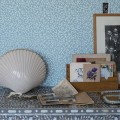Le Chat Noir – Art Nouveau’s Most Enduring Icon
One of Art Nouveau’s most enduring images, Le Chat Noir by Théophile Alexandre Steinlen reflects the interest in mysticism and symbolism that formed the era’s allure.
Designed by Steinlen in 1898 as a poster for Le Chat Noir, a Parisian cabaret based in Montmarte run by Rodolphe Salis, it became a symbol for all that the nightclub represented.
In Montmartre and the Making of Mass Culture, Elizabeth K. Menon describes, “The symbolism of the black cat and the merging of religious elements (very apparent in Steinlen’s famous poster) were integrated furthering the idea that Salis operated an alternative religious society on the premises that united art with spirituality.
The period 1890 to 1914, which saw the rise and fall of Art Nouveau, was complicated: it has often been depicted as an age that represented the end of many things, but it was also an age of beginnings.
It was a turbulent time: millions of people migrated to rapidly growing cities, becoming urban dwellers in a modernised environment. How people lived, worked, and took their pleasures was transformed in a single generation and, alongside the physical shift, how they thought about the world also began to change.
Steinlen’s Le Chat Noir forms part of the display at the ‘Sense and Sensuality: Art Nouveau 1890-1914’ exhibition running until December this year at the Sainsbury Centre for Visual Arts in Norwich. Sense and Sensuality explores the intense emotional maelstrom of the period.
It focuses on personal and sexual liberation, women and the rise of feminism, youth revolution, the questioning of organised religion, eroticism and an exploration of mythology, novel art forms, psychology and dreams, narcotics and the concept of mass manufactured art.
Thus Art Nouveau could be interpreted as a style of liberation and a widespread questioning of values.



